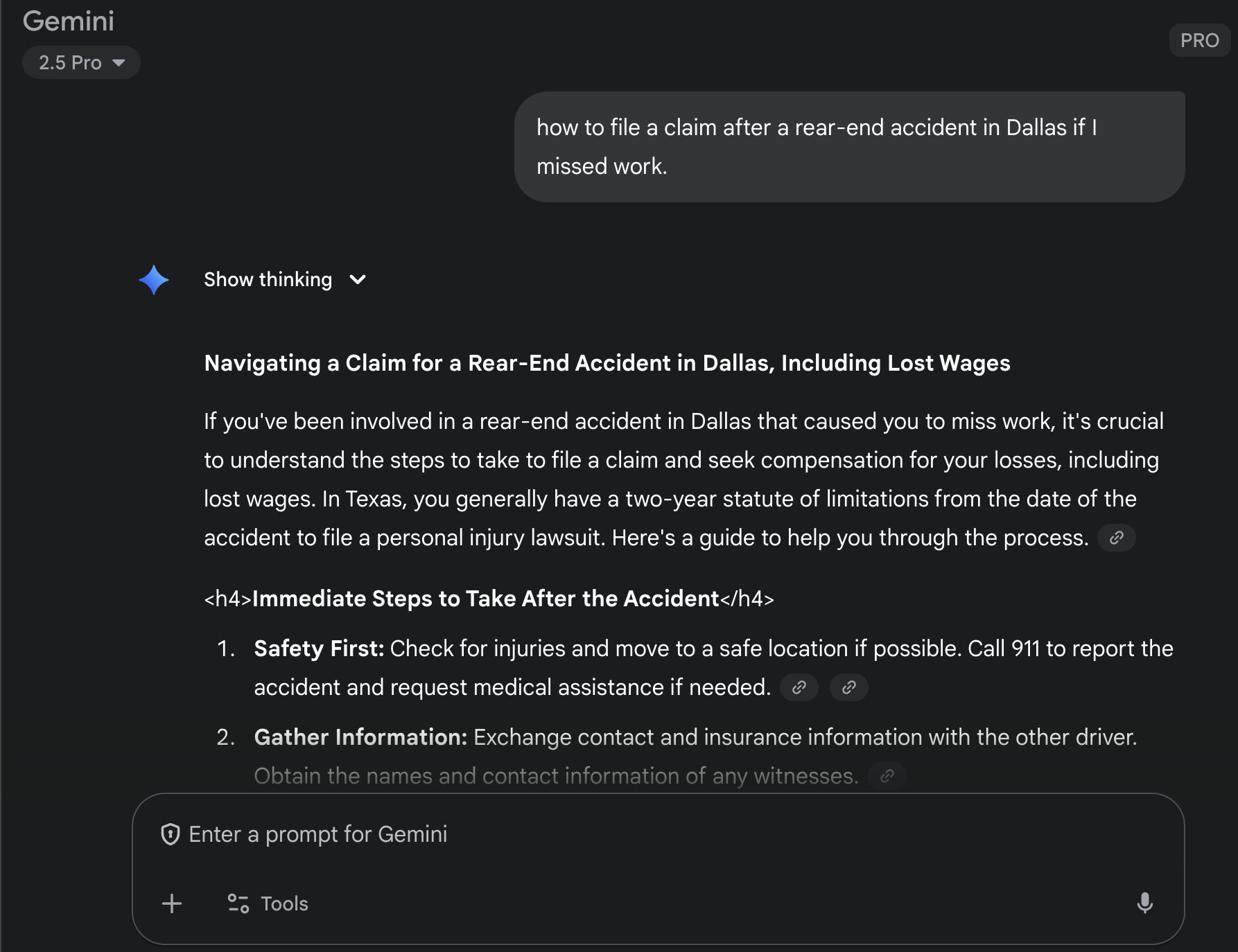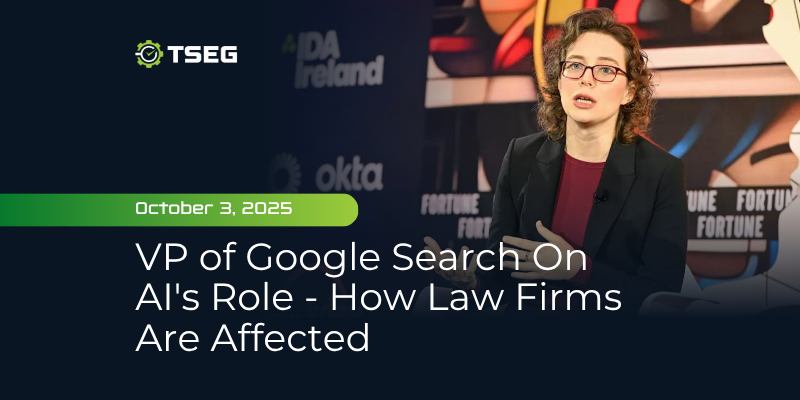VP of Google Search On AI’s Role – How Law Firms Are Affected
Posted on Friday, October 3rd, 2025 at 7:23 pm
What Google’s VP of Search Just Confirmed
Elizabeth Reid, Google’s VP of Search, recently emphasized what many in digital strategy have already been preparing for. Artificial intelligence is not replacing traditional search, but it is becoming a much more visible part of it. Google’s AI Overviews and AI Mode are now serving over 100 million users every month across the United States and India.
This matters because it directly affects how users see information and make decisions. These AI-generated answers appear before standard search results and offer quick summaries of topics by pulling from multiple online sources. For attorneys, this means content needs to work harder to earn visibility. If your firm’s content cannot answer layered legal questions clearly and with authority, it is more likely to be bypassed.
The full interview can be viewed here:
Here are some of the main points from the interview, summarized.
AI in Search Is No Longer Behind the Scenes
Artificial intelligence has been part of Google Search for years. What has changed is that users can now see AI working directly in the search results. Features like AI Overviews and AI Mode are front and center, not background tools.
Elizabeth Reid confirmed there was no single turning point. The rollout has been gradual, driven by gains in speed, accuracy, and user trust. This progress is leading to a more guided and conversational experience, where answers often appear before the first website link.
Content now needs to serve a dual purpose. It must be written clearly enough to be picked up by AI systems, while still offering enough value to encourage a click for more detail. The quality of the response matters before the first visit to your site ever happens.
Users Are Asking Longer, Smarter Questions
Search behavior is changing. People are writing longer queries with more detail, often including specific needs or conditions. Instead of typing “personal injury lawyer,” someone might now search for “how to file a claim after a rear-end accident in Dallas if I missed work.” The responses will then also be conversational and specific.

According to Reid, this change comes from users having more confidence in getting helpful results. When the response feels worth the effort, people ask more questions and follow up more often. That includes complex or sensitive topics they might have avoided before.
This creates a clear opportunity. Content that responds to multi-part questions with clarity and depth is more likely to earn visibility. That means anticipating the next question, not just answering the first.
AI Overviews Have Not Replaced Traditional Results
Google’s AI Mode now reaches over 100 million monthly users in the United States and India. These tools offer quick summaries, but they still include standard web results underneath. Reid made clear that users continue to value hearing directly from trusted sources, especially when making personal or high-stakes decisions.
This reinforces the importance of content that reflects real expertise. People want answers, but they also want to understand the reasoning behind them. In areas like legal advice, the need for human perspective remains strong.
Google Wants Content That Says Something New
Reid made it clear that content built to satisfy an algorithm no longer works. AI Overviews already provide surface-level answers. If a page simply repeats what is widely available, users have no reason to click.
Content now needs to bring something original. This could be a legal interpretation, a real example, or a clearly written explanation of a nuanced issue. When that happens, the summary acts as a preview, and the user clicks through to learn more. The goal is to earn attention by offering something the AI summary cannot provide on its own.
Other AI Tools Are Fueling More Google Searches
Reid pointed out that many users still turn to Google after asking questions on other platforms. They use large language models to start a search, then come to Google to confirm what they read. This behavior has led to overall growth in search activity.
Rather than losing ground, Google is adapting by adding more features that feel conversational and personalized. The result is a search experience that encourages follow-up questions and deeper exploration.
AI Tools Are Taking Over Repetitive Tasks, Not Replacing People
Google is introducing features that can help users complete tasks with less effort. Reid described this as removing busywork while still keeping users in control. Examples include filling out forms, making phone calls, or gathering basic information across multiple steps.
These features are designed to speed up the process without removing the connection between a person and a service provider. For legal intake, this could eventually mean users arrive at your site with more context, better questions, and higher intent.
What matters is making sure that when they arrive, the experience continues to feel clear and personal.
India Shows How Quickly AI Search Can Expand
India is one of Google’s most active markets for voice and visual search. It was also one of the first countries to receive AI Mode, just weeks after the United States. According to Reid, this early rollout reflects how important the market is to Google’s testing and development process.
Google is also using India to push forward features focused on language accessibility. This includes tools that help users search across different literacy levels and dialects. These efforts are helping Google understand how to reach wider audiences with AI-powered results.
This testing ground gives a clear signal. Search behavior is becoming more varied, and content strategies need to account for how different people ask questions and expect answers.
What This Means for Legal Marketing Right Now
Google’s direction is clear. AI is now a visible part of the search experience, and the content that earns placement must do more than restate basic facts. Visibility depends on relevance, clarity, and perspective. That includes the kind of detail a user cannot get from a summary alone.
At TSEG, we’ve been preparing for these changes well before they reached the main results page. Our content strategy already reflects what Google is now publicly confirming. We write for real users, not algorithms. If your current approach does not match what Google is showing today, we can help you rebuild it with the right focus. Contact us today.
